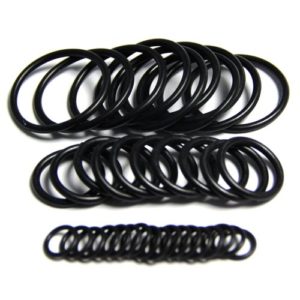Rubber O Rings
Rubber O-ring, also known as a toric joint, is a mechanical gasket in the shape of a torus with a round cross-section, designed to be seated in a groove and compressed during assembly between two or more parts, creating a seal at the interface. Rubber O-ring may be used in static applications or in dynamic applications where there is relative motion between the parts and the O-ring. O-RING is a loop of elastomer with a round cross-section intended to be seated in a groove and squeezed together during assembling between two or more parts creating a seal at the interface to block the passage of liquids or gases. O–Rings selection is based on chemical compatibility, service temperature, sealing pressure, lubrication requirements and working atmosphere. O-rings can form a static or dynamic seal. A static seal is where the O-ring does not move and is used simply for containing pressure or maintaining a vacuum. Dynamic seals can be reciprocating (like a piston and cylinder), or rotating (shaft rotating in a housing). Axial squeeze and radial squeeze are two methods for applying an O-ring. Modern Rubber and Plastic Industries is one of the largest manufacturers and suppliers of Rubber. O-rings in Kolkata, India. We offer our esteemed customers a wide range of elastomeric materials for both specials and standard applications which allow the O-Ring to seal basically all liquid and gaseous media. We specialize in the manufacturing of Rubber O-Rings ranging from 3 mm to 500 mm. We manufacture O-rings in various sizes and colors from various types of rubber like FKM or Viton, Silicon, EPDM, NBR, Neoprene, SBR & Natural.The hardness rating on a Shore A scale for O-rings can be 30 ~ 95 Durometer. Exact specifications should be clarified by our engineers, as chemical and physical properties of an O-ring can differ based on manufacturing technique. When custom o-rings are required, the width or Thickness, Insider Diameter, and Outside Diameter are important to consider.
Some possible advantages of transfer molding over compression molding can include:
1. High Cavity Count – In many cases, transfer molded rubber products require fewer and simpler pre-forms. One pre-form can fill hundreds of cavities
2. Cost effective tooling
3. Tighter control of dimensional tolerance – the mold is not held open by excess material spilling out of the cavity parting line; all the excess hold the plunger open from the pot.





